Boasting both French and Italian influences, Corsican cuisine offers diners the very best of both worlds. This popular travel destination is loved for its beaches and natural scenery, but the food and drink on offer around the island is another highlight that promises a truly unique culinary experience.
As can be expected of a Mediterranean island, menus here are stacked with seafood and produce grown locally. This means you’ll sample dishes made using only the freshest ingredients, no matter what time of year you’re staying at one of our luxury villas in Corsica.
Early inhabitants of Corsica lived inland in the mountains, eating dense and earthy ingredients and farming sheep for their meat and milk. Centuries later, official decrees made every landowner plant a chestnut, olive, fig, and mulberry tree every year, which changed the farming habits of the island and consequently the local cuisine.
As Corsica has grown in popularity as a tourist destination, many of the unique food products from the island have been granted AOC and AOP status, which has raised the island’s profile as a culinary destination. Looking for a little guidance when deciding what to order first on the island? Here are the best foods to try in Corsica on your next visit.
Charcuterie
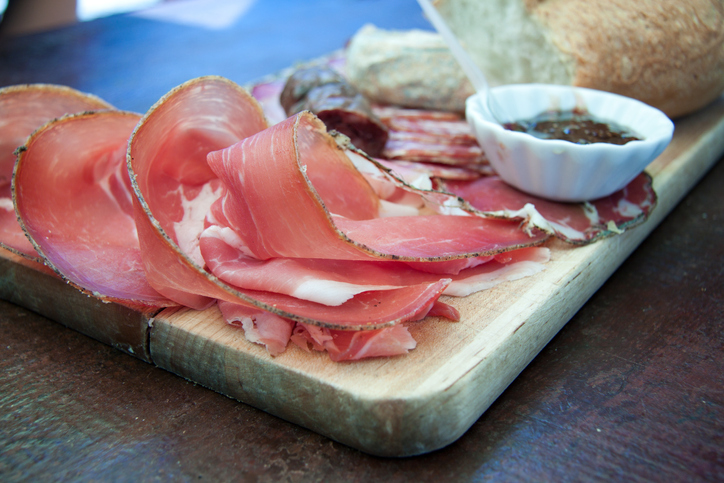
Italian influences are most evident in Corsican cooking when it comes to their shared love of cured meats. The best charcuterie options are made from free-range pigs, which are raised on the island’s famous chestnuts and give the meat a delicious flavour.
Figatellu, a type of smoked pork liver sausage made using wine and seasoned with garlic and herbs, is by far the most popular of all Corsican charcuterie. You’ll often find it incorporated into lentil soups as well as served beside other cured varieties.
If you’re looking to sample a full range of Corsican cured meat, the 12-month matured prisuttu ham is another speciality on the island. Capicollu is a smoked meat which is a bit of an Italian classic, whilst Corsican lonzu is a salted, smoked and peppered tenderloin pork fillet.
Civet de Sanglier
One of the most famous Corsican dishes is Civet de Sanglier; a rich casserole made with the island’s signature ingredient of wild boar. Typically served alongside pasta or polenta, it’s a hearty option that is slow-cooked with onions, carrots, garlic, chestnuts, and wine, giving it a really rich and gamey flavour. If you’re looking for authentic and traditional Corsican food, there’s no better option than a wild boar stew.
Veau aux Olives
Another example of the best food in Corsica that follows a traditional and unique recipe is veau aux olives. Best enjoyed in the autumn or winter because of its heartiness, this slow-cooked stew contains veal and olives as its star ingredients, as well as onions, tomatoes and wine. It’s typically served over pasta and is a great way to enjoy one of the best-loved Corsican recipes during your trip.
Fish
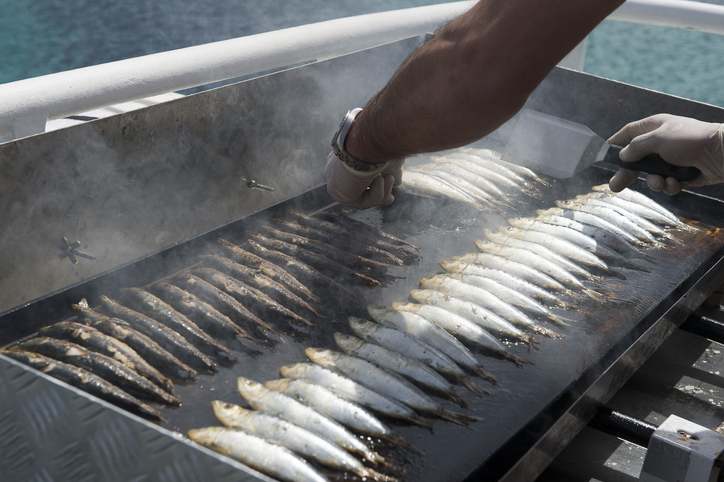
Corsican recipes traditionally make the most of the ingredients that are to hand, which is why you’ll find meaty, vegetable-based dishes inland and a lot more fish incorporated into meals along the coast. Locals living by the sea certainly make the most of their immediate access to fresh seafood, with beautiful blue waves surrounding them on all sides.
Grilled swordfish, oysters, red mullet, anchovies, sardines and lobster feature on menus widely across the island, but those in the know about the best food in Corsica head straight to the east coast to sample the best oysters. You should also consider giving trout a go, sourced from the island’s freshwater lagoons and rivers – it’s a great alternative to the more expensive inland meat
A signature seafood meal in Corsica is aziminu, which is a kind of bouillabaisse or fish stew. Various rockfish and shellfish are cooked with tomatoes, garlic and saffron, and lobster is sometimes added in more gourmet versions of the dish.
Brocciu cheese
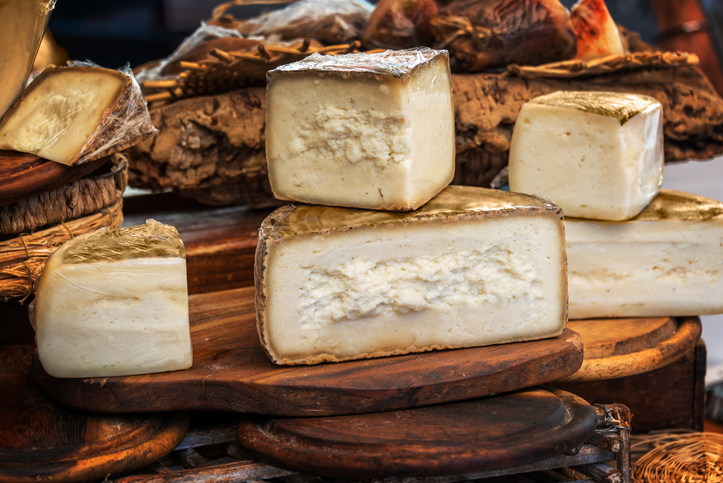
You may be surprised to learn that Corsica actually has quite the reputation when it comes to its cheeses. In fact, an annual cheese fair known as A Fiera di U Casgiu takes place in Venaco every May, celebrating the local varieties which are used in a lot of the Corsica cuisine that comes from the mountains.
However, it’s brocciu cheese, a non-lactose, tender variety, that reigns supreme among Corsican cheeses. It’s either made from goat’s or ewe’s milk, resulting in a texture that’s similar to ricotta, and can be eaten fresh or after it’s been aged.
You’ll find brocciu cheese incorporated into savoury soups, omelettes, and other starters, but it’s also a popular ingredient in cakes. If you’re looking to try Corsica traditional food during your holiday then this is an ingredient that should be at the top of your list!
Fiadone
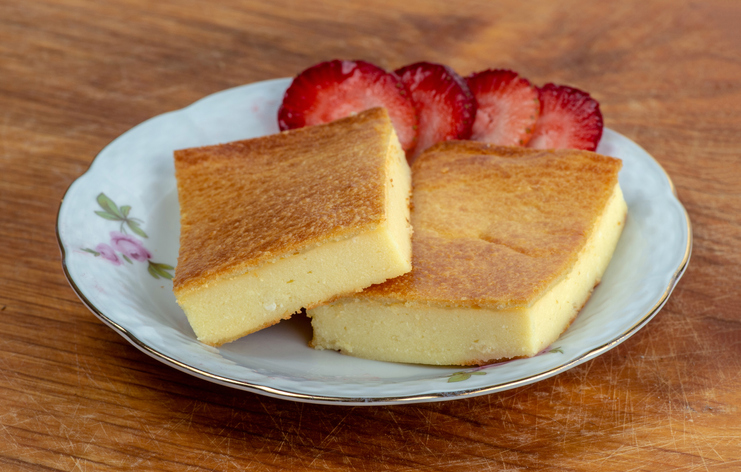
Speaking of cakes, Fiadone is a type of baked Corsican cheesecake that’s made without any base. Instead, the popular dessert uses brocciu, sugar, lemon zest, chestnut flour and eggs.
Fiadone is sometimes served hot and fresh from the oven, but the more popular choice is chilled. What better way to top off a warm day spent basking beneath the Mediterranean sunshine than with a cool, tangy slice of cheesecake?
Chestnut flour
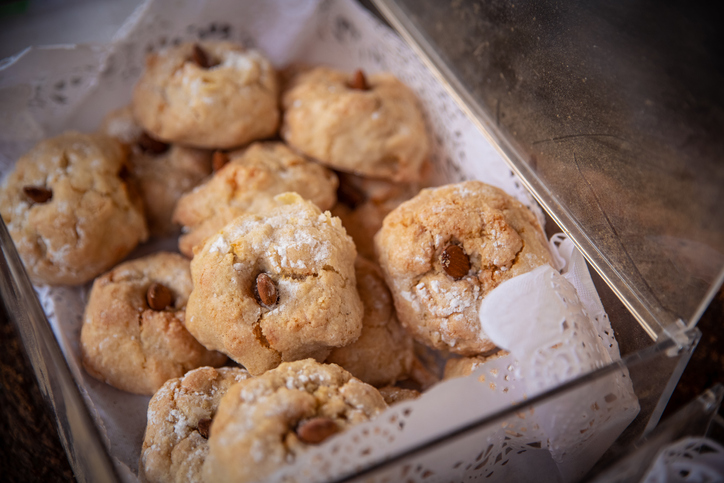
Corsica’s delightful take on cheesecake isn’t the only thing that uses chestnut flour. In fact, this is now an essential ingredient in many Corsican desserts, harkening back to the 16th century when every landowner had to plant four trees per year – one of them being a chestnut tree.
Today, chestnut flour is used in a wide range of Corsican dishes, from bread and pasta to porridge and pastries, including Flan a la Farine de Chataigne. This special type of Corsican flan is flavoured with eau de vie – a spirit that translates to mean “water of life”.
Chestnut flour beignets are also popular, and you may even find some stuffed with brocciu cheese for a touch of extra indulgence. For more traditional Corsican cuisine, pulenda is the name of bread baked with chestnut flour, water and salt, typically shaped into a ball or a pancake and then cooked in a deep dish.
Canistrelli
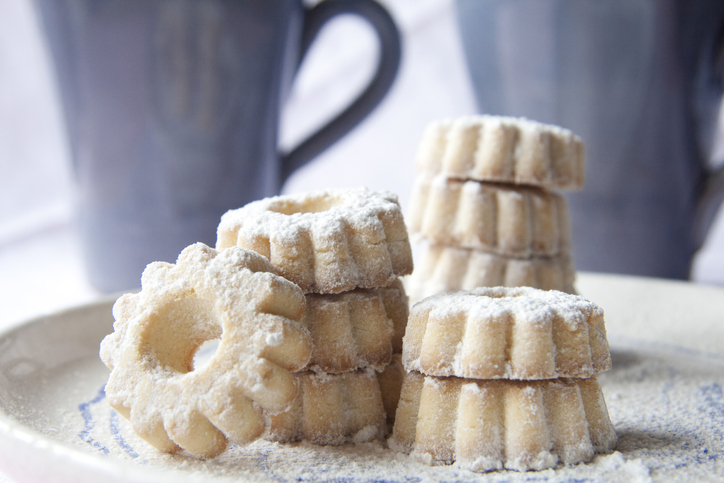
After something smaller yet still sweet? Canistrelli shortbread cookies are made using flour, sugar, white wine, and some kind of flavouring – typically lemon zest. They have a crisp, crunchy texture that makes them ideal for dipping in coffee or other hot drinks, but they’re not quite as tough as Italian biscotti.
Locals are known to enjoy them for breakfast, but you can also pop a few in your pocket to snack on throughout the day. They’re also a great Corsican food to buy to take home as a souvenir of your holiday, as they’ll travel pretty well!
Honey

Corsican honey is another item that makes a great souvenir from your travels. Thanks to the wide variety of plants that thrive on the island, honey from Corsica has a rich aroma and flavour and was certified with an AOC (Appellation d’Origine Contrôlée) in 1998 due to its quality.
There are six main varieties of honey from Corsica ranging from light to dark, each boasting a unique flavour. Enjoy the honey simply with bread, or appreciate the flavour paired together as an ingredient in a range of desserts.
Wine
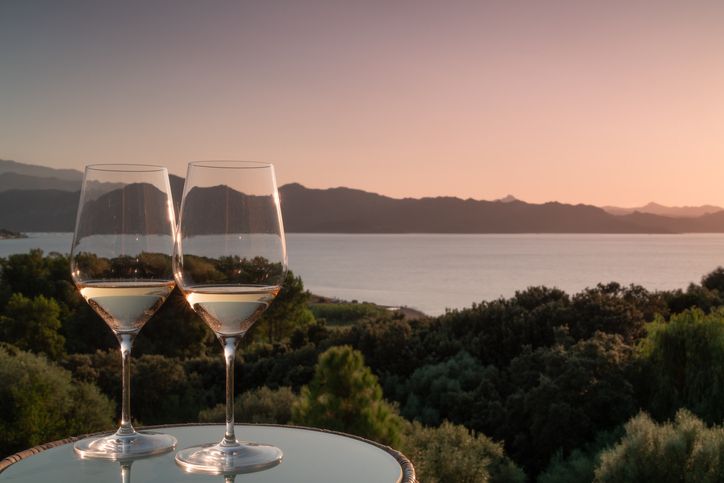
With so much delectable cuisine to sample, you’ll want a fine glass of wine to pair with it all. Lucky for you, Phoenician settlers first planted vines on Corsica over 2,500 years ago, kick-starting a winemaking trade that continues on the island to this day.
Due to the wide variety of terrain and altitudes on the island, you’ll find an equally impressive array of locally produced wines, with the most popular ones including Nielluccio, Sciacarello and Minustellu. Corsica’s wine reputation is definitely on the up, so it’s well worth enjoying a variety of pairings at the best restaurants in Corsica or buying a bottle yourself.
If you’re planning a holiday to the island then visiting a vineyard to learn about Corsican wine from the producer is a great idea. Many vineyards are open to the public, and whether you favour white, red or rosé, you’ll find something special to whet your appetite here. If you visit the island in July you can also attend the Fiera di U Vinu wine festival in Luri, enjoying guided wine tasting sessions and meeting the island’s winemakers to learn more about their produce.
So, there you have it: our top picks for the best food in Corsica. The unique blend of French and Italian culinary influences, combined with the island’s great climate for growing all kinds of food, makes it an incredibly exciting destination for a culinary holiday.
Not only are the meat and cheese options excellent, but there are numerous local desserts that are worth a try after you’ve indulged in Corsican cuisine, so you’re sorted if you have a sweet tooth. And of course, wine fans can enjoy both Italian and French varieties as well as Corsican specialities, giving plenty of options for all palettes.
So, there you have it: our top picks for the best foods to try in Corsica. Looking for somewhere to stay throughout your visit? Check out our luxury holiday villas in Corsica, and feel free to contact a member of our concierge team if you need some extra help deciding.


Leave a Reply